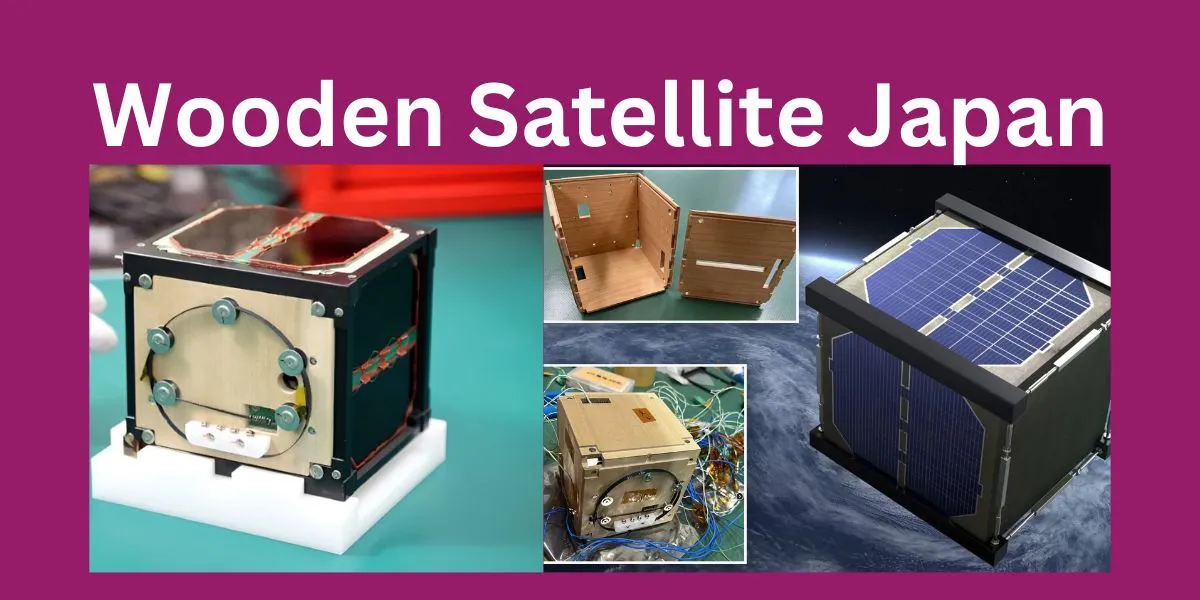Have you ever imagined a satellite made of wood orbiting the Earth? It sounds like something out of a science fiction novel, right? Well, Japan is turning this imaginative idea into reality. The concept of a wooden satellite might sound quirky, but it holds immense potential for the future of sustainable space exploration. Let’s dive into this fascinating innovation and explore why Japan is betting on wood for the next frontier in space technology.
What Is a Wooden Satellite?
The Basics of Satellite Technology
Before we jump into the wooden aspect, let’s cover the basics. Satellites are man-made objects placed into orbit for various purposes—communication, weather forecasting, GPS, and more. Traditional satellites are made from metals and composites to withstand the harsh conditions of space.
Enter the Wooden Satellite
Japan’s initiative, led by Kyoto University and Sumitomo Forestry, aims to create a satellite primarily made of wood. The goal? To reduce space debris and foster sustainability in space technology. This satellite will function just like its traditional counterparts but with a crucial difference in its material composition.
Why Use Wood?
The Eco-Friendly Angle
Space exploration has contributed to an alarming amount of space debris. Traditional satellites, when decommissioned, become floating hazards. Wooden satellites, on the other hand, promise to burn up completely upon re-entry into the Earth’s atmosphere, leaving no harmful debris behind.
A Renewable Resource
Unlike metals and composites, wood is a renewable resource. By using specially treated wood, scientists aim to create a satellite that’s both durable and sustainable. Think of it as taking a piece of Earth to explore the universe.
Strength and Durability
You might be wondering—can wood really survive the harsh conditions of space? Surprisingly, yes! Specially treated wood can withstand extreme temperatures, radiation, and vacuum conditions of space. It’s lightweight yet strong, making it an ideal material for this innovative satellite.
The Science Behind It
Collaborations and Innovations
Kyoto University teamed up with Sumitomo Forestry to experiment with different types of wood and treatments. Their research focuses on ensuring the wood remains durable and functional in space. They’re even considering the type of trees and treatment processes to ensure maximum resilience.
Testing in Space
Before the full-scale launch, small wooden cubes are being sent to space to test their endurance. These tests are crucial to assess how the material behaves in a real space environment.
Environmental Impact
Tackling Space Debris
One of the most significant issues facing modern space exploration is space debris. Traditional satellites leave behind hazardous materials that can remain in orbit for decades. Wooden satellites offer a solution by completely disintegrating upon re-entry, leaving no trace behind.
Reducing Carbon Footprint
Producing satellites from metal and composites involves a significant carbon footprint. Wood, being a natural and renewable resource, offers a more environmentally friendly alternative, aligning with global efforts to reduce carbon emissions.
Economic Benefits
Cost-Effective Production
Wooden satellites could potentially be cheaper to produce than their metal counterparts. The process of harvesting and treating wood is less energy-intensive compared to mining and refining metals, making this a cost-effective option.
Boosting the Economy
This innovation could boost the economy by creating new industries focused on the production and treatment of wood for space technology. Imagine forests being cultivated specifically for satellite production—how cool is that?
Challenges and Criticisms
Skepticism from the Scientific Community
Not everyone is convinced about the viability of wooden satellites. Critics argue about the long-term durability and performance of wood in space. There are concerns about the wood’s ability to withstand micrometeorite impacts and space radiation over extended periods.
Technological Hurdles
Developing a wooden satellite isn’t as simple as swapping metal parts for wood. It involves intricate research and innovation to ensure the wood can survive the harsh conditions of space. The process is still in its early stages, with many technological hurdles to overcome.
The Future of Wooden Satellites
What Lies Ahead?
Despite the challenges, the future looks promising. If successful, wooden satellites could revolutionize the space industry by providing a sustainable, eco-friendly alternative to traditional satellites. Japan’s wooden satellite could be the first step towards a greener approach to space exploration.
Expanding Applications
If wooden satellites prove to be viable, the technology could extend beyond just satellites. Imagine wooden components in space stations or even wooden structures on the Moon or Mars. The possibilities are endless!
Conclusion
The concept of a wooden satellite may sound like a whimsical idea, but it addresses some of the most pressing challenges in space exploration today—sustainability and space debris. Japan’s bold move could pave the way for a new era of eco-friendly space technology. While there are challenges to overcome, the potential benefits make this an exciting development in the world of science and innovation.
FAQs
1. How will wooden satellites handle the harsh conditions of space?
Specially treated wood is being developed to withstand extreme temperatures, radiation, and vacuum conditions. Initial tests show promise, but further research is needed.
2. Why is reducing space debris important?
Space debris poses a risk to operational satellites and space missions. Reducing debris is crucial for the safety and sustainability of space exploration.
3. Will wooden satellites be cheaper than traditional ones?
Potentially, yes. Wood is a renewable resource, and its production is less energy-intensive than metal, possibly lowering overall costs.
4. What kind of wood will be used in these satellites?
The specific type of wood hasn’t been disclosed, but it will be specially treated to endure the harsh conditions of space.
5. When will the first wooden satellite be launched?
The first wooden satellite is expected to be launched within a few years, following successful tests of wooden cubes in space.










